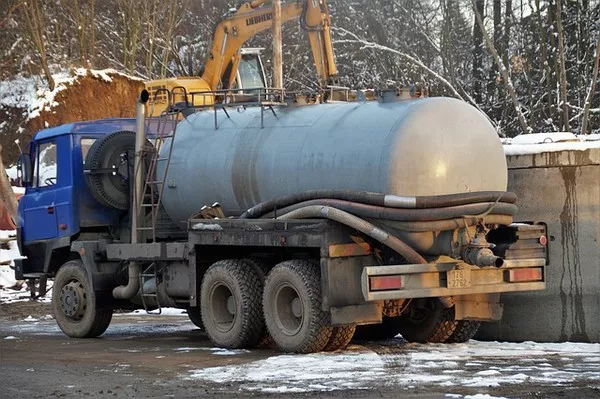In the realm of wastewater management, lagoon sewer systems stand out as a unique and increasingly popular solution. Unlike traditional sewer systems that rely on underground pipes, lagoon systems utilize large, shallow ponds or basins to treat and dispose of wastewater. This article delves into the workings of lagoon sewer systems, exploring their components, functioning, benefits, and drawbacks.
Components of a Lagoon Sewer System:
A typical lagoon sewer system consists of one or more ponds or basins, each designed to perform specific treatment functions. These ponds are usually lined with impermeable materials such as clay or synthetic liners to prevent leakage into the surrounding soil and groundwater. The primary components of a lagoon system include:
Influent Structure: This is the entry point where wastewater from households, industries, or other sources enters the lagoon system. It may include screens or grates to remove large debris and prevent clogging of the system.
Primary Lagoon: The first stage of treatment occurs in the primary lagoon, where physical processes such as settling and sedimentation take place. Solid particles settle to the bottom of the lagoon, forming sludge, while lighter materials float to the surface and are removed.
Secondary Lagoon: The effluent from the primary lagoon flows into the secondary lagoon, where further biological and chemical processes occur. Aerobic bacteria break down organic matter through processes such as oxidation, reducing the concentration of pollutants in the water.
Tertiary Lagoon (Optional): In some cases, a tertiary lagoon may be included for additional treatment or storage of the effluent before discharge. This stage may involve advanced treatment methods such as filtration or the use of additional chemicals to remove remaining contaminants.
Effluent Discharge: Once treated, the effluent is discharged from the lagoon system either into surface water bodies or into the ground through infiltration basins or spray irrigation systems, depending on local regulations and environmental considerations.
Functioning of Lagoon Sewer Systems:
Lagoon sewer systems operate based on natural processes of wastewater treatment, utilizing physical, biological, and chemical mechanisms to remove contaminants and pathogens. The key processes involved in the functioning of lagoon systems include:
Sedimentation: Gravity allows solid particles to settle at the bottom of the lagoon, where they form a layer of sludge. This process removes a significant portion of suspended solids from the wastewater.
Biological Treatment: Aerobic and anaerobic bacteria present in the lagoon break down organic matter through metabolic processes, converting it into simpler, less harmful substances such as carbon dioxide and water. This biological treatment helps reduce the biochemical oxygen demand (BOD) of the wastewater.
Solar Disinfection: Exposure to sunlight in the shallow lagoon basins facilitates the disinfection of wastewater by killing or inactivating harmful pathogens such as bacteria, viruses, and parasites. Solar disinfection, also known as solar radiation-based water treatment, is a natural and effective method for pathogen removal.
Nutrient Removal: Lagoon systems can also facilitate the removal of nutrients such as nitrogen and phosphorus through biological uptake by algae and other microorganisms. This helps prevent nutrient pollution in receiving water bodies, which can lead to eutrophication and harmful algal blooms.
Benefits of Lagoon Sewer Systems:
Lagoon sewer systems offer several advantages compared to traditional sewer systems and other wastewater treatment technologies:
Cost-Effectiveness: Lagoon systems are often more cost-effective to construct and maintain than conventional sewer systems, especially in rural or remote areas where access to centralized infrastructure is limited.
Simple Operation and Maintenance: Lagoon systems have relatively simple designs and require minimal mechanical or electrical equipment, resulting in lower operational and maintenance costs. Routine tasks such as sludge removal and vegetation management are straightforward and can be performed with basic equipment.
Natural Treatment Processes: Lagoon systems harness natural processes of wastewater treatment, requiring fewer chemicals and energy inputs compared to mechanical treatment plants. This makes them environmentally friendly and sustainable options for wastewater management.
Versatility and Scalability: Lagoon systems can be designed and sized to accommodate varying wastewater flows and loads, making them suitable for small communities, industrial facilities, or seasonal establishments such as campgrounds or resorts.
Drawbacks and Challenges:
Despite their advantages, lagoon sewer systems also have some limitations and challenges:
Land Requirements: Lagoon systems require significant land area for construction, which may be a limiting factor in densely populated or urban areas where land is scarce or expensive.
Odor and Aesthetic Issues: Inadequate management or operational issues can lead to the generation of odors and unsightly conditions in and around lagoon facilities, impacting nearby residents or businesses.
Vulnerability to Climate and Weather: Lagoon systems can be susceptible to fluctuations in weather and climate conditions, such as heavy rainfall or extreme temperatures, which may affect treatment efficiency and system performance.
Regulatory Compliance: Meeting regulatory requirements for effluent quality and discharge permits can be challenging for lagoon systems, especially in areas with stringent environmental regulations or sensitive receiving water bodies.
See Also What Is A Reed Bed Sewage System
Conclusion:
Lagoon sewer systems offer a sustainable and cost-effective solution for wastewater management, particularly in rural or decentralized settings. By harnessing natural treatment processes and minimizing energy and chemical inputs, lagoon systems provide an environmentally friendly alternative to traditional sewer systems. While they have certain drawbacks and challenges, proper design, operation, and maintenance can help maximize the efficiency and effectiveness of lagoon sewer systems in treating and disposing of wastewater while protecting public health and the environment.

